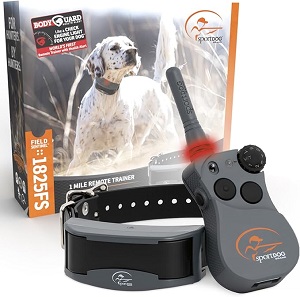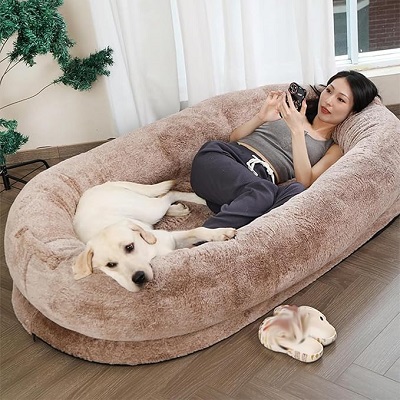
How to Train a Rescue Dog with Trauma or Anxiety
Train a Rescue Dog with Trauma or Anxiety
Introduction
Adopting a rescue dog can be a rewarding experience, but for dogs that have experienced trauma or anxiety, training may require extra patience, care, and understanding. These dogs may have been abused, neglected, or passed through several homes, which can leave them emotionally scarred. As a dog owner, it’s important to create an environment of trust and safety to help your dog overcome their fears. In this guide, we’ll explore step-by-step strategies to train a rescue dog with trauma or anxiety.
1. Understand Your Rescue Dog’s Background
Before beginning any training, it’s essential to try to understand your rescue dog’s past. While you may not know the full story, look for signs of trauma and anxiety. For example, a dog who cowers, growls, or shows excessive nervousness around people or objects may have experienced something negative in the past.
Common Signs of Anxiety or Trauma in Rescue Dogs:
Essentials for Your Newly Adopted Pet
Welcoming a shelter pet into your life is a beautiful journey. Here are some handpicked items to help your new friend feel safe, loved, and right at home:
- Cowering or hiding
- Fear of loud noises or sudden movements
- Avoiding eye contact
- Panting or drooling excessively when stressed
- Aggression (barking, growling) when scared
- Pacing or restlessness
- Hypervigilance (always on guard)
Understanding these signals will help you tailor your training approach to your dog’s needs and avoid pushing them beyond their comfort zone.
2. Create a Safe, Calming Environment
The first step in helping your rescue dog heal is providing a space where they feel secure. Dogs with anxiety or trauma often feel unsafe, so your home needs to become their safe haven.
Steps to Create a Calm Environment:
- Establish a Quiet Space: Create a designated area in your home where your dog can retreat to when they feel anxious. A cozy crate with soft blankets can provide a sense of safety.
- Minimize Stressful Triggers: Avoid exposing your dog to triggers like loud noises, crowds, or unfamiliar environments early on.
- Maintain a Routine: Dogs thrive on routine, and sticking to a consistent schedule for feeding, walks, and bedtime will help reduce anxiety.
- Use Calming Tools: Consider calming aids like anxiety wraps (ThunderShirts), calming music, or natural supplements (after consulting your vet) to ease their anxiety.
3. Start with Building Trust
Trust is the foundation of training for any dog, but it’s even more crucial for a rescue dog with trauma or anxiety. Your dog may be slow to trust humans, so the first step is to build a positive bond.
Tips for Building Trust:
- Move Slowly: Avoid rushing into training or forcing your dog into uncomfortable situations. Give them time to come to you at their own pace.
- Use a Gentle, Calm Voice: Speak to your dog softly and avoid sudden loud noises or gestures.
- Hand-Feed Treats: Hand-feeding high-value treats can help your dog associate you with positive experiences.
- Avoid Eye Contact Initially: In dog language, direct eye contact can be seen as a threat. Until your dog feels comfortable, avoid too much eye contact.
- Respect Their Boundaries: Never force your dog into a situation that scares them. For example, if they’re afraid of strangers, give them space rather than introducing them to new people right away.
4. Use Positive Reinforcement Techniques
For rescue dogs with trauma or anxiety, using positive reinforcement training is crucial. This method focuses on rewarding good behavior with treats, praise, or toys, helping the dog associate training with positive outcomes.
How to Train Using Positive Reinforcement:
- Reward Calm Behavior: Reward your dog every time they display calm, relaxed behavior. This can include sitting quietly, walking calmly on a leash, or remaining calm around new people.
- Be Patient with Commands: Start with basic commands like "sit" or "stay," and be patient if your dog is slow to respond. Don’t punish or scold for mistakes.
- Break Down Tasks into Small Steps: Training a traumatized dog can take longer, so break each task into small steps. For example, if your dog is afraid of going outside, start by just opening the door, rewarding them for remaining calm, and gradually working your way up to short walks.
- Use a Marker Word: Just like clicker training, use a marker word like “yes!” to indicate when your dog has done the right thing, followed immediately by a reward.
5. Desensitization and Counterconditioning
Desensitization is the process of gradually exposing your dog to their triggers in a controlled, non-threatening way. Counterconditioning involves changing their emotional response to those triggers by associating them with positive experiences.
How to Desensitize and Countercondition:
- Identify Triggers: Does your dog react fearfully to certain objects, people, or environments Identify these triggers so you can work on desensitizing them.
- Start Small: Begin by exposing your dog to the trigger at a very low intensity. For example, if your dog is afraid of other dogs, start by exposing them to a calm dog from a distance.
- Pair Exposure with Rewards: Every time your dog stays calm around the trigger, reward them. Over time, they’ll start associating the trigger with positive experiences.
- Increase Intensity Slowly: Gradually increase the intensity of the exposure, such as moving closer to other dogs, while continuing to reward calm behavior.
6. Avoid Punishment-Based Training
Punishment or negative reinforcement can exacerbate anxiety and fear in a traumatized dog. Instead, focus on gentle and positive methods. Scolding or using physical corrections may worsen their behavior and damage the trust you’ve worked hard to build.
Why Punishment is Harmful:
- Increases Fear: Punishment can cause your dog to fear you, making them more anxious and reactive.
- Leads to Confusion: If your dog is punished for behaviors they can’t control (like cowering or shaking), it can lead to confusion and further stress.
7. Establish a Routine and Build Confidence
Routine and predictability help reduce anxiety in dogs with trauma. Establish a daily routine for feeding, walking, and playtime, so your dog knows what to expect.
Tips to Build Confidence:
- Train One New Skill at a Time: Teach your dog one command or trick at a time. Each success builds their confidence and reinforces the positive bond between you.
- Celebrate Small Wins: Even minor progress should be celebrated. Acknowledging small improvements will motivate both you and your dog to keep going.
- Interactive Toys and Puzzles: Use puzzle toys or treat-dispensing games to engage your dog’s mind and keep them busy. This can help reduce anxiety and boost their confidence.
8. Gradually Socialize Your Dog
Rescue dogs with trauma or anxiety may be hesitant around other dogs, people, or new environments. Socialization is still important, but it should be done at your dog’s pace.
How to Socialize an Anxious Dog:
- Start in Calm Settings: Begin in a quiet, controlled environment where your dog feels safe.
- One-on-One Introductions: Introduce your dog to one new person or dog at a time, rather than overwhelming them with groups.
- Reward Positive Interactions: Whenever your dog interacts calmly with others, reward them with treats or praise.
- Watch for Stress Signals: Pay close attention to your dog’s body language. If they seem overwhelmed, remove them from the situation and try again later.
9. Get Professional Help if Needed
If your dog’s trauma or anxiety is severe, or if they display aggressive behavior, seeking help from a professional dog trainer or behaviorist is a good idea. An experienced trainer can develop a personalized plan to address your dog’s specific issues.
Conclusion
Training a rescue dog with trauma or anxiety requires time, patience, and compassion. By creating a safe environment, building trust, using positive reinforcement, and gradually exposing your dog to their fears, you can help them overcome their anxiety and lead a happier, more confident life. Remember, every small victory counts, and with love and care, your rescue dog can thrive in their new home.
Affiliate Products
We may earn a small commission when you shop through our links — it helps us keep sharing love and care for every dog out there, at no extra cost to you.
Up to 75% Discount

Dog Collar with Health Monitoring
BUY NOW »
Up to 55% Discount

Luxury Faux Furhuge Napping Bed
BUY NOW »

